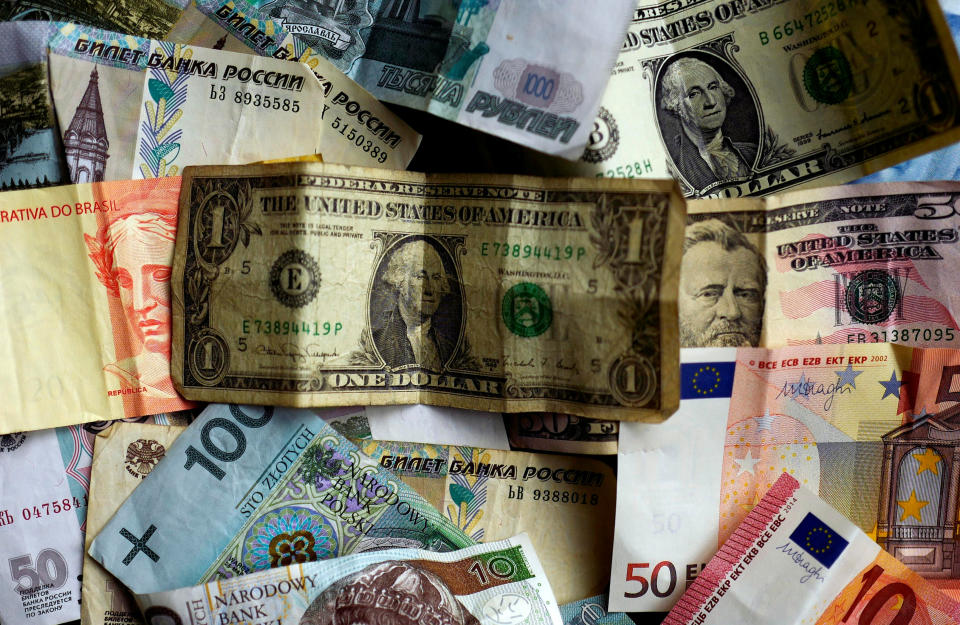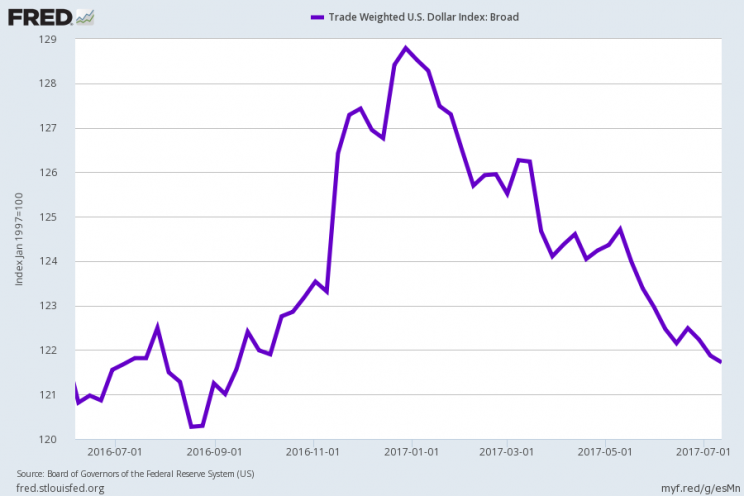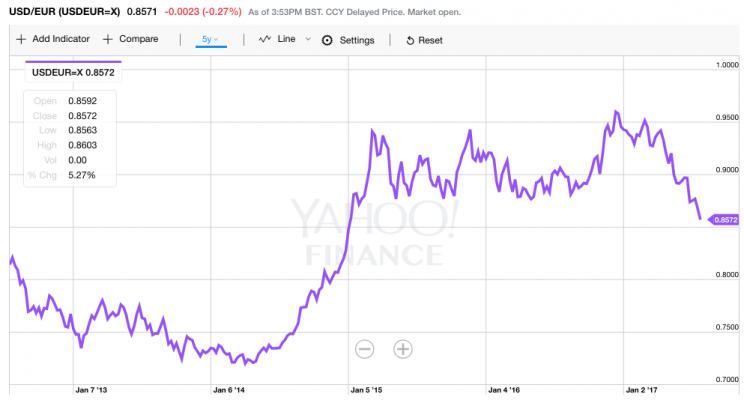The explanation for the tumbling US dollar starts with Trump
Since the beginning of the year, the US dollar has been getting smoked relative to other major currencies around the world.
There are a few things driving this currency move. But for most analysts, the explanation begins with US President Donald Trump.

“The surprise outcome of the US Presidential election with its implications for tax cuts and increased fiscal spending along with expectations that the Fed will raise its benchmark rate further in 2017 helped push the dollar to a 14-year high (on a trade-weighted index basis) in late 2016,” Oppenheimer’s John Stoltzfus said.

Unfortunately, what was once expected to happen isn’t actually happening.
The “Trump slump”
“Global investors had expected progress on health and tax reform by this summer, but that isn’t going to happen,” Horizon Investments’ Greg Valliere said. “Now there will be a focus on budget issues – which could stall after Labor Day, leading to a crisis as the fiscal year ends on Sept. 30. We still expect progress on tax reform by later in the fall — but it could be a rocky ride between now and then, as Trump focuses more on the Russia probe than his own agenda.”
Valliere characterized this factor as “the Trump slump.” Indeed, analysts blame Trump for lackluster economic activity.
“Delays in the pro-growth Trump administration’s policies have not bolstered growth and in fact, the delay has led to disappointments in the US growth trajectory,” Deutsche Bank Wealth Management’s Larry Adam said.
Adam notes that this comes as the outlook for the euro zone has been improving, which helps explain why the dollar is at a two-year low against the euro.
These economic matters are also having an impact on the outlook for monetary policy.
“Soft economic data and tepid inflation were not what the Federal Reserve expected this summer, but now officials will play the hand they’ve been dealt,” Valliere said. This means we could see loose monetary policy for longer.
Meanwhile, the European Central Bank appears to be signaling tighter monetary policy is on the horizon. This dynamic is bearish for the US dollar and bullish for the euro.

But it’s great news for America’s globalized companies
The weak dollar is bad news for American vacationers with plans to travel abroad. But it’s good news for America’s multinational companies because as the the dollar declines, the sales and earnings generated abroad get a boost from the foreign currency translation. According to S&P Dow Jones Indices, S&P 500 (^GSPC) companies produce about 43% of their sales outside of the U.S.
“If the downward momentum in USD continues, we would likely see further positive revisions to US earnings estimates,” JPMorgan’s Dubravko Lakos-Bujas said.
For Trump, there’s a bit of irony here because at one point he took credit for the rise of the dollar following his election.
“I think our dollar is getting too strong, and partially that’s my fault because people have confidence in me,” Trump told The Wall Street Journal in April.
Perhaps it’s the loss of confidence that is driving the dollar lower. And if a lower dollar is what Trump wanted, then he appears to be succeeding.
–
Sam Ro is managing editor at Yahoo Finance.
Read more:
